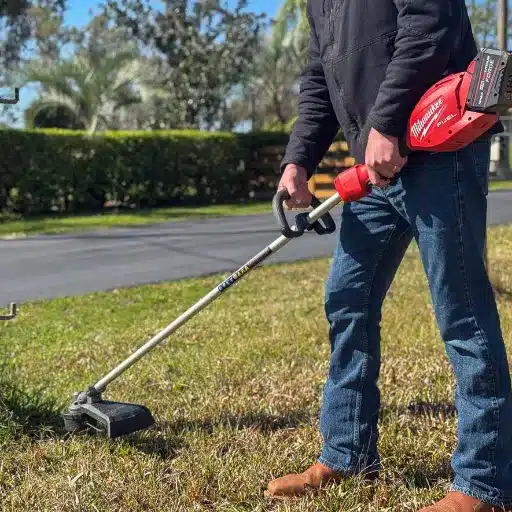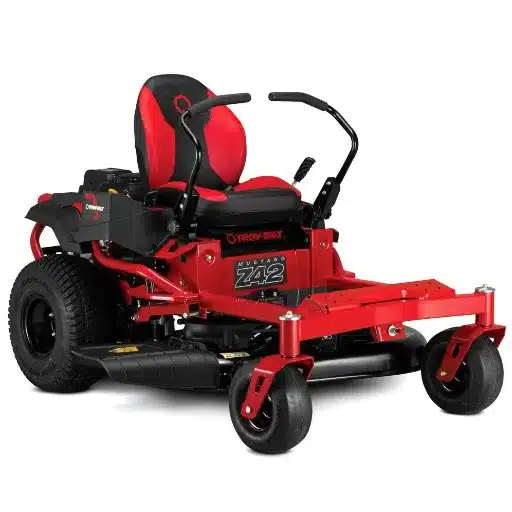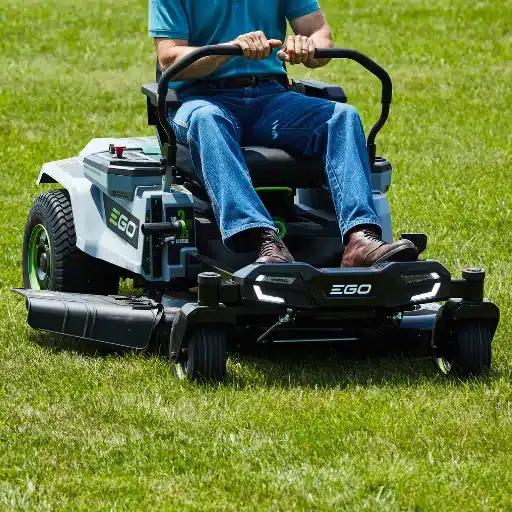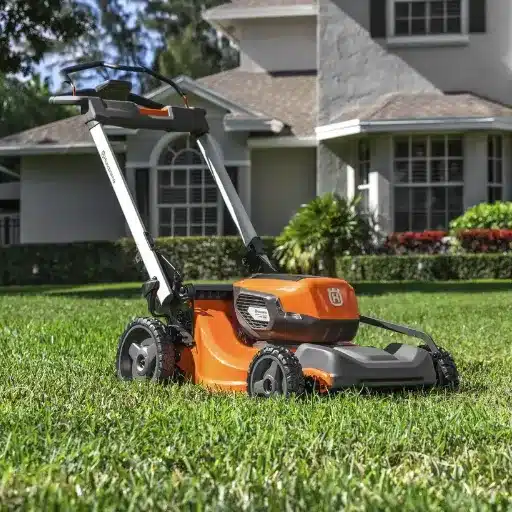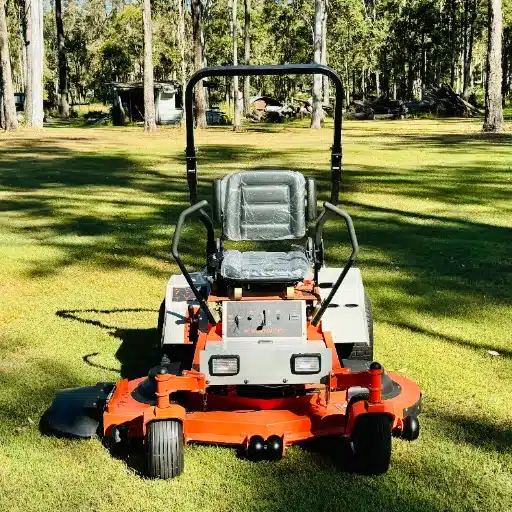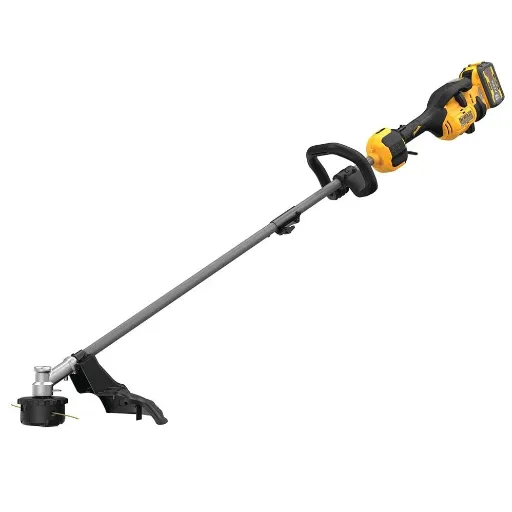Maintaining a lush green lawn was never so easy and efficient before the advances of technology. Welcome to an innovative world of lawn robots, automated devices that care for your lawn with utmost precision. This blog post peeks into the older, ongoing, fun-filled world of robotic mowers; their state-of-the-art features, the primary advantages they yield, and how they are changing the outlook on lawn maintenance. If you are tired of spending hours pushing a mower here and there or looking for a green-smart way to cut your yard, this guide will lead you to the lawn robot that fits your needs. Light up your imagination in lawn care with a fully motorized lawn that is gorgeous and on the go, with few charges required.
How Does a Lawn Robot Work?
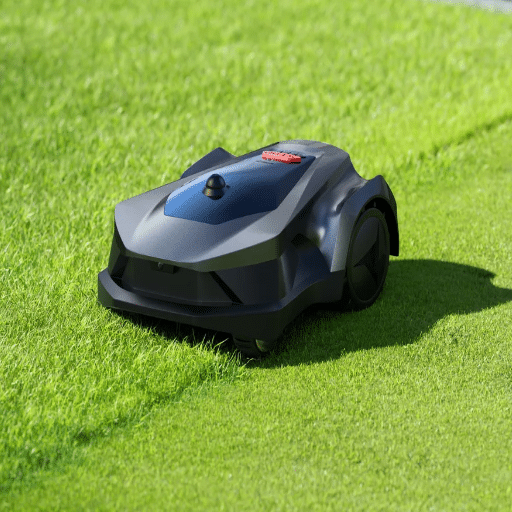
The lawn robot autonomously drives about the yard to cut the grass using built-in sensors and innovative programming. In addition to being powered by rechargeable batteries, these systems use boundary wires or GPS signals to define the mowing area. Sensors provide the robot with obstacle detection, allowing it to change the path accordingly to avoid collisions, thereby maintaining efficiency and safety. Most models mow randomly or systematically to cut the lawn evenly. At the end of the task or when the battery gets low, the lawn robot returns automatically to its cradle for a charge.
Understanding Navigation and Obstacle Avoidance
Robotic lawn mowers must be able to navigate the yard, avoid obstacles, operate effectively, and provide independent service. Earlier models relied on basic control, whereas modern ones incorporate GPS-assisted navigation, gyroscopes, and digital mapping to maintain precision amidst complicated yard layouts. GPS technology generates a digital map with designated zones covering the mowing area to allow the mower to cover the entire area systematically with minimal overlapping and missed spots.
Obstacle avoidance is made possible by an array of onboard sensors, including ultrasonic, infrared, and collision sensors. The ultrasonic sensors detect an object by sending out a sound wave that reflects off the object, and the mower slows down or moves off before contact can be made. Infrared sensors, on the contrary, alongside a camera, help further enhance object recognition so that some premium models can identify obstacles like garden tables and chairs or toys. Moreover, lift and tilt sensors add to the mower’s safety by causing an immediate cessation of blade rotation once it is lifted or tipped.
As per recent industry reports, the rate at which new robotic mowers are being adopted in homes is expected to grow at over 15% annually, owing to improved algorithms and sensor technologies. The latter allows for more accurate navigation even in yards with dense landscaping or narrow pathways. By integrating these state-of-the-art features, robotic mowers ensure that they deliver results consistently and relieve users of all worries about them being autonomous and collision-free.
The Role of Boundary Wires or GPS in Guiding Your Mower
Relying on boundary wires or sophisticated GPS technology, these modern robotic lawn mowers precisely specify their mowing area and navigate it equally. Boundary wires need to be physically laid down around the edge of a lawn to create an invisible fence, which the mower detects with embedded sensors. This method is highly reliable and popular, especially in irregularly shaped lawns or lawns with multiple obstacles. Data indicates that the coverage accuracy rose above 90% using boundary wires, minimising robotic mower re-mowing, thereby ensuring that robotic mowers retain their true capability even in complex environments.
GPS mowers utilize satellite positioning to ascertain their location and map the specific lawn area autonomously. High-precision GPS can pinpoint the mower’s position within centimeters, hence managing mowing without wire obstacles. This technology is more suitable for large properties as it reduces setup time and maintenance. Moreover, some GPS-based mowers will incorporate real-time tracking and remote-control features, enhancing the user’s ease of use and security. Each system has perks, allowing the homeowner to choose whichever lawn and taste suits them.
Maintaining the Cutting Height and Blade Efficiency
In maintaining a healthy lawn appearance, one needs to maintain the correct cutting height and an efficient cutting mechanism. Setting an appropriate cutting height depends on the type of grass in your yard. Most cool-season grasses, such as Kentucky bluegrass and fescue, grow well at heights between 2.5 and 4 inches. Warm-season grasses like Bermuda and Zoysia generally do better when maintained at heights between 1 and 2 inches.
Sharpen the blades regularly as part of routine mower maintenance. If not sharp enough, the blades tear the grass rather than slicing it, resulting in ragged grass tips that invite easy attack from diseases and stress. Sharpening mower blades every 20 to 25 hours of mowing is highly recommended to maintain high-quality cuts. Conveniently, some new mower models have built-in indicators that alert the user when the blades require sharpening.
Besides this, it is a good idea to adjust cutting practices by season to improve lawn health. A slightly raised cutting height can help grass retain moisture and protect the root system in drought or heat stress. Addressing these aspects will allow smooth lawn mowing and aid in maintaining attractive and hardy turf throughout the growing season.
What to Look for in the Best Lawn Robot?

Sizing of the lawn and cutting capacity must be considered to ascertain compatibility when choosing the best lawn robot. Adjustable cutting height, innovative mapping technology for efficient navigation, and sensors to avoid obstacles should be some of the other features—battery life and charging time matter for charge and uninterrupted operation, especially for bigger lawns. The robot must also be weather-resistant, easy to clean, and compatible with the remote control and scheduling app.
Evaluating Battery Power and Rechargeable Battery Options
When considering issues related to battery power and the rechargeable battery options for robotic lawn mowers, the options vary according to their type, capacity, and efficiency. Choose a battery that best fits your lawn care needs. Most robotic lawn mowers have lithium-ion batteries, which are more durable and fast-charging, unlike the older nickel-cadmium batteries, which had a shorter lifespan.
Battery capacity, typically measured in ampere-hours (Ah), is an operative parameter that directly affects how long the mower, for instance, 2.5 to 5Ah capacity robotic lawn mowers are standard, and the higher the capacity, the longer it supports run time for large lawns. Depending on the model and cutting conditions, a standard lithium battery might provide a runtime of 60 to 120 minutes per charge, with a charging time of 60 to 120 minutes, ensuring a faster turnaround operation.
Also, these days, advanced innovative battery management systems are in place to optimize energy consumption better and prolong battery life. These systems prevent overcharging and heat generation, thus making the mower energy efficient. For large lawns, mowers with features like automatic docking and recharging are worth considering; when low on battery, these mowers return to the charge station automatically and then resume mowing from where they left off, saving time and providing seamless performance.
Finally, it is essential to remember that all these factors depend on the weather and terrain conditions, which can reduce battery ratings. Adverse conditions like working on wet grass or essentially uphill lawns would drain batteries faster. Hence, you must consider a mower with adequate power, sound energy efficiency management, and good weather-resilient performance to perform competently in all lawn care scenarios.
Smart Home Integration and Anti-Theft Features
Modern robotic lawn mowers can now be integrated with smart homes for control and monitoring through smartphone apps or voice commands via virtual assistants such as Alexa or Google Assistant. For example, many models now allow for real-time tracking and scheduling so users can remotely set up mower routines. Recent industry statistics suggest that Wi-Fi or Bluetooth connectivity is installed on over 40% of robotic mowers released in the past year, allowing smooth interaction with other smart devices inside the home ecosystem.
Robbery-proof features are another essential aspect to look into for the safety and security of these mowers. Many of these machines come with anti-theft protections such as PIN codes and alarms that go off if unauthorized movement occurs. GPS tracking for finding their mower in theft or misplacement cases has become a default standard. Further advances by manufacturers in encryption and security protocols are continuously being implemented to ensure remote control features cannot be compromised. This makes using the mowers more comfortable for the end-user and adds another layer of protection from losing their investment in this cutting-edge lawn care technology.
Yuka, Husqvarna, and Other Top Brands
A host of manufacturers guiding the yard robotic mower market is the area for innovation, provided for by reputation and advanced functionalities. From its inception, the Automower line by Husqvarna has stood for rugged build quality and innovative technologies, including an AI-based navigation system that adapts to complex lawn shapes. Some models are rated for the weather and are designed to operate in multiple conditions, including rainy days. Yuka enters the higher-profile arena with low-price alternatives that do not compromise quality. Known for efficient cutting patterns and operation with a low noise profile, Yuka mowers are for those who want an affordable solution with modern amenities such as app connectivity and intelligent scheduling.
According to recent market data, the GPS-based navigation and multi-zone programming robots appear to be the preferred choice for customers. The leading brand by market share is Husqvarna, which accounts for nearly 20% of the robotic mower sales worldwide, with other quality competitors following in close pursuit. Due to an emphasis on affordable and reliable options, the popularity of Yuka rises in Asian markets.
The other contenders, including those from Worx and Robomow, spice up the competition by promising and delivering cutting-edge sensor technologies, voice control from intelligent assistants, and green designs optimized to conserve energy. These brands lay the foundations of environmental sustainability and ease of use while constantly testing the waters with innovations catered toward modern-day customers.
How to Optimize Lawn Care with a Lawn Robot?
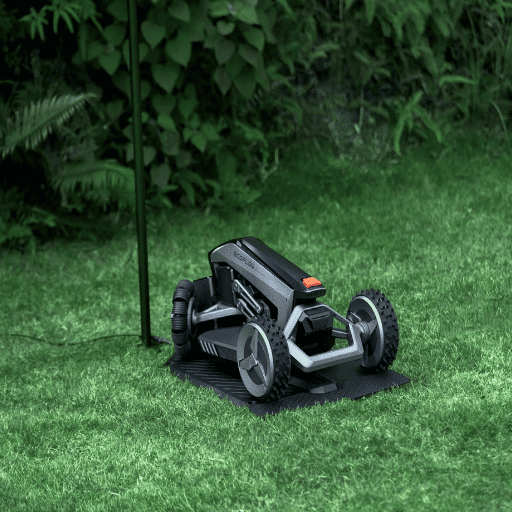
Setting up the boundary wire or the mowing area through virtual boundaries, if supported by your robot, may be the first step in optimizing lawn care. The blades should be cleaned more often, and any obstacles found on the lawn should be removed, enabling the machine to work freely. Such hours will be determined by the growth rate of your lawn and the time of year; you may want to consider your noise preferences and an energy efficiency factor. Software updates should never be ignored to take advantage of the further performance improvements being contributed to the product. It would be wise to watch the device at certain times to ensure it is doing well, and adjustments might be made when necessary for optimal outcomes.
Designing Mowing Zones for Efficient Robotic Mowing
Creating well-defined zones for mowing is essential to ensuring your robotic mower operates efficiently throughout your lawn. First, break the entire lawn into sections according to size, shape, and obstacles so some areas are not over-mowed and others are left neglected. Each zone should accommodate the mower’s battery capacity and cutting width; this will maximize coverage and minimize time spent on each area.
For smaller lawns, just one mowing zone would suffice, allowing the mower to operate uninterrupted until the whole area is covered. However, larger or more complex lawns should be delineated into zones that will enable the robot to complete each section on a charge without prematurely returning to its base. Studies have shown that GPS-enabled robotic mowers can increase zone efficiency by 30%, as they can memorize and optimize their coverage paths.
Also, particular attention should be paid to the boundary settings in every zone. Boundary wires must be installed carefully to guide the mower and avoid conflicts near flower beds, patios, or pools. Special care will be required for irregularly shaped zones with tight corners or narrow passages, where thorough mapping will be needed to keep the mower from skipping or getting stuck. Periodic tweaking of zones is also recommended based on observed mowing behavior and landscaping changes.
With great design and management of mowing zones, you can reap all the benefits of convenience and enjoy consistent lawn maintenance with minimal interference from manual controls.
Understanding Perimeter Wire Setup
The perimeter wires are essential in defining the robotic mower’s boundaries for efficient and safe operation. To install it right, begin by laying the wire around the edges of your lawn and securing it so it is loose from tension. Experts suggest installing the wire nearly 2-4 inches from the edge of the lawn, where no obstacles exist, so that the mower can cut almost at the boundary level without going beyond it.
In areas where pathways, flower beds, or obstructions exist, place the wire 6-8 inches away to protect the mower and surrounding features from damage. Always ensure corners are looped smoothly because sharp turns can confuse the mower. To avoid signal interference while bridging narrow passages, maintain at least 24 inches of distance between the wires.
The wire can be protected from accidental damage during regular gardening activities by using stakes to hold it in place or burying it an inch below the ground. Some sources indicate that, in most cases, the perimeter wire supports signal lengths of up to 1,600-2,000 feet, thus allowing for much larger lawns and complex landscapes. Verify the exact guidelines with your manufacturer.
Once installed, testing the wire perimeter is critical. Next, power up the robotic mower and check whether it senses the wire and correctly navigates along the boundary. At corners and intersections, pay closer attention to smooth guidance. Following these points and catering to your unusual lawn setup will give you a working mower system.
Managing Grass Clippings and Lawn Health
Proper management of grass clippings contributes to a clean lawn appearance and promotes lawn health in general. Grass clippings, when left on the lawn after mowing, are beneficial. The grass clippings decay quickly, returning nutrients such as nitrogen, phosphorus, and potassium to the soil. Lawn care studies say this can reduce fertilizing by up to 25%, saving one’s time and money.
The mower blade should be kept sharp, but one should try not to cut wet grass as it tends to clump. Another important thing is to remember the “one-third rule,” which means never cutting more than one-third of the grass height at a time. This reduces stress on the grass and helps it put down healthy roots. Additionally, aerating the lawn regularly and watering it well help ensure the soil improves and roots grow more deeply.
Should clippings be excessive or the lawn neglected for a while, the excess can be collected and composted as an alternative. Composting turns clippings into organic matter that will benefit the flower beds, vegetable gardens, and other planting areas. Such sustainable practices help homeowners create a wonderful yard with luscious grass with the least environmental impact.
Which lawn robot is Suitable for Different Terrains?
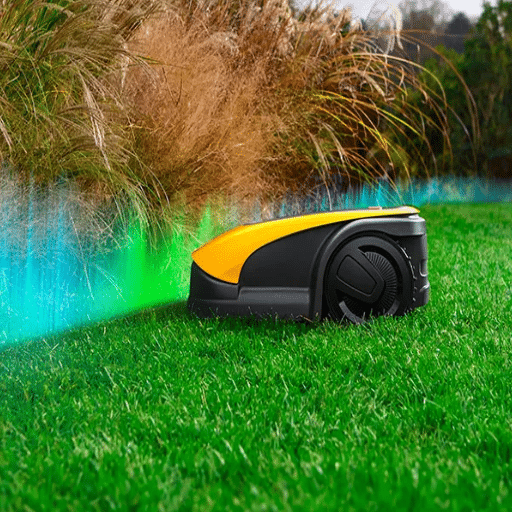
When purchasing a lawn robot for valleys and higher terrains, specific model characteristics should be considered. A simple model with standard wheel traction and simple solutions will suffice for flat, even lawns. Robots for uneven terrains should feature an all-wheel drive system and powerful motors able to cope with inclines up to 35 degrees or more. Robust sensor technologies and GPS mapping are well considered for complex layouts with obstacles. Also, ensure that the cutting width and battery life match the area of your lawn.
Choosing the Right AWD for Steep Slopes
When buying a lawnmower with AWD for use on steep slopes, some features and specifications may be considered to ensure performance and safety. Current models can work in gradients up to and beyond 45 degrees, but do check to ascertain the slope handling capability of the one you want to buy. The highest torque motors are best fitted for steep terrains, providing enough power to get up the incline while maintaining some grip. Wheel traction and tread design will undoubtedly be some of your performance metrics to watch. Big, rugged wheels with special rubber treads give better grip by preventing slipping on wet or uneven grass surfaces. Sophisticated AWD models usually have an adaptive terrain technology that dynamically adjusts motor power to each wheel and provides the best traction and navigation on tricky surfaces.
Battery life is another crucial factor. On steep slopes and large areas, lithium-ion batteries with large capacities (top rated at 5.0Ah—7.5Ah) almost guarantee the mower can finish its work without the need to be charged very often. Consider a model with a well-designed energy management system that can extend the runtime and still meet the heavy demands of climbing.
Safety features also rank very high in priority. Robust obstacle detection, tilt sensors, and kill switches must be in place to guarantee safety on steep and uneven ground. Robots aided by GPS-based navigation have started appearing more frequently, providing accurate path planning and ensuring working consistency in hilly terrains. The right features and specifications can help choose the robotic lawnmower best suited to steep slopes.
Navigating Obstacle Avoidance and Uneven Terrain
The newest generation of robotic lawnmowers can handle complex environments. Therefore, they provide obstruction avoidance and navigation across uneven terrains more efficiently than ever. Many mowers use advanced ultrasonic sensing to detect real-time obstacles and smoothly divert their course without harsh stopping maneuvers or crashes. Moreover, advanced wheel designs with extraordinary levels of traction help with stability and grip when working on bumpier and uneven grounds, like those with rubberized or treaded wheels.
According to an industry report published in 2023, more than 70% of newly developed robotic mowers come with innovative terrain-mapping systems that leverage LiDAR or 3D camera technology. These systems prepare a detailed topographical map of the lawn to maintain good operational capabilities even on sharp inclines or hidden dips. Meanwhile, adaptive cutting algorithms are being increasingly installed that change the blade height according to terrain variations to prevent damage to the machine and offer uniform cutting.
Thanks to ingraining these technologies, robotic lawn mowers are more reliable and efficient, ready to cater to homeowners with challenging landscapes. Alongside smart navigation and improved design as their priorities, these devices are becoming the designers’ tools for future yard maintenance.
How Does the Worx Landroid Compare to Other Models?

The Worx Landroid has been praised for its affordability, user-friendliness, and modern features. Compared to its counterparts, the Landroid would be an excellent buy, fitted with features from innovative navigation technology, allowing custom mowing schedules and fully tilting the motor to handle uneven terrains. One added advantage to having a modular design is that a user can install features, such as GPS tracking and anti-theft measures, later. While some competition may apply to a larger canvas, Landroid remains the most reliable and convenient option for small- to medium-sized yards.
Features and Battery Power of Worx Landroid
With the Worx Landroid, you have one of many incredible features for innovative robotic lawn mowers. AI learns the lawn layout and adapts accordingly to provide precise and efficient lawn care. It has a user-friendly app customizes mower schedules and remotely checks the lawn’s progress. Safety is another domain Landroid emphasizes, along with sophisticated safety features like obstacle detection and automatically lifting sensors to ensure no harm to kids or animals.
Regarding battery performance, the Landroid employs powerful lithium-ion batteries that provide long hours of runtime and excellent efficiency. Depending on the model, the average lawn robot can mow about 0.25 acres on a single charge, with some of the best doing up to 0.5 acres. The whole charging procedure is another beauty: once nearing battery depletion, the Landroid glides back to the charging dock. And another cool factor about this battery is that it works in sync with the rest of the Worx PowerShare series tools, making it quite handy for power tool enthusiasts. After this, with their good battery utilization and functional possibilities, Worx Landroids continue to be trusted and environmentally friendly lawn care solutions.
Comparison with Mammotion Luba and Other Best Lawn Robots
When comparing the Worx Landroid, the Mammotion Luba, and other best-performing lawn robots, other eminent distinguishing features and technical specifications come to light. For example, the Mammotion Luba is famous for its big and prestigious RTK GPS technology that rejects having boundary wires in marks on a robot lawn mower. This system allows Luba to work precisely, destroying any boundary within an accuracy of less than 2 centimeters. On the other hand, the Worx Landroid is of more traditional lineage with some rather innovative features like setting your mowing schedules and the robot automatically adjusting to the growth pattern of your grass.
Another significant difference lies in cutting efficiency and coverage. The Mammotion Luba is set primarily to manage large properties, often state areas up to 5,000 square meters (1.24 acres) on one charge, and serves well for big lawns. In contrast, due to its smaller size, the Worx Landroid is designed to serve lawns up to 2,000 square meters (0.5 acres), from minor to medium-sized properties. Battery life serves as another deciding factor here: due to its high-capacity battery, the Mammotion Luba has a longer runtime than its competitors, for the most part.
In terms of performance, the two models focus on climbing ability, with an utmost slope handling of 75% (approx. 37 degrees) for the Luba and 35 degrees for the Landroid, thus guaranteeing efficient work on various terrains. The next point of comparison is connectivity. The Mammotion Luba offers app control with more advanced mapping while sharing zones and real-time monitoring performance. The Landroid also ensures app integration and ties well into smart home ecosystems such as Google Assistant and Amazon Alexa.
The Landroid tends to be the least expensive model, exceptionally accommodating those already in the greater Worx PowerShare system. The Luba, on the other hand, is much more expensive and meant for a client who demands the utmost in technology and supreme efficiency. The two models will excel in specific scenarios depending on lawn size, budget, and affinity for technical input, pointing toward variety and innovation within the robotic lawn mower market.
Understanding Cutting Patterns and Navigation Techniques
Robotic lawn mowers are said to use one of two techniques in cutting patterns and navigation. Some employ a random cutting pattern and ensure total coverage is achieved within a stipulated time. In contrast, others use GPS or guide wires for more systematic navigation and precise mowing. Systematic navigation is more favorable, offering consistent and efficient results on larger or more complex lawns.
Reference Sources
Development and Performance Evaluation of a Robot for Lawn Mowing (2020)
Comparative Life Cycle Assessment of Autonomous Lawn Mowing Systems (2021)
A Review of the Performance of Smart Lawnmower Development (2025)
Frequently Asked Questions (FAQs)
Q: What are the benefits of using a robotic lawn mower?
A: Robotic lawn mowers offer numerous benefits, including less noise pollution, reduced manual labor, and consistent lawn maintenance. They are eco-friendly compared to gas-powered mowers and can work autonomously, saving time.
Q: How does a robot lawn mower detect boundaries?
A: Robot mowers use technologies like GPS navigation and boundary wires to detect and stay within the specified lawn area. Advanced models may also use no-go zones and reference stations for precision.
Q: What features should I look for in the best robotic lawn mower?
A: Look for features like rain sensors, all-wheel drive capabilities, a reliable cutting disc, and GPS navigation. Consider the lawn size and whether the mower is equipped with an electric motor for efficient performance.
Q: How do robot mowers work in different weather conditions?
A: Many robot mowers have rain sensors that allow them to pause mowing during rain and resume once conditions are dry. This prevents damage to both the mower and your lawn.
Q: Can a robot mower handle uneven terrain or slopes?
A: Yes, models like the Mammotion Luba 2 AWD and Husqvarna robotic mowers are designed to efficiently handle uneven terrain and slopes, thanks to their all-wheel drive and robust design.
Q: What is the difference between traditional mowers and automatic lawn mowers?
A: Traditional mowers require manual operation, while automatic lawn mowers operate autonomously. Robot mowers can work on a set schedule, require less maintenance, and are typically quieter than traditional gas-powered mowers.
Q: How do I determine the best robot lawn mower for the size of my lawn?
A: Consider the lawn size and choose a robot mower with appropriate coverage capacity. Models like the Luba Mini and Yuka Mini are designed for smaller lawns, while others efficiently cover larger areas.
Q: What is the significance of the cutting disc in robot mowers?
A: The cutting disc is crucial for the mower’s performance, determining the mowing height and efficiency. High-quality discs ensure a clean cut and improve the mower’s overall effectiveness.
Q: Are there robot mowers that offer remote control features?
A: Yes, many modern robot mowers, such as the LawnMaster and Mammotion Yuka, offer connectivity options through a connected app, allowing you to control and monitor the mower remotely.
Q: What safety features do robotic lawn mowers have?
A: Robotic lawn mowers have safety features like lift and tilt sensors, spiral cutting systems, and emergency stop buttons to prevent accidents and ensure safe operation.



